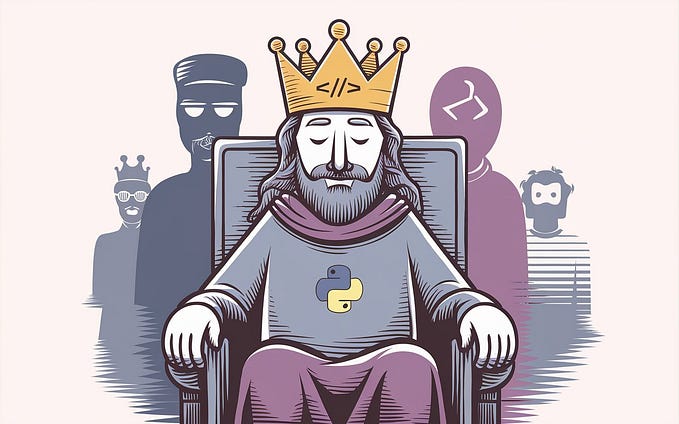How Fast and Furious Will Be the Unbundling of College Education?
Many of us remember college fondly. Those four (or five or six…) years that we spent trying to figure stuff out well enough to get a bachelor’s degree and head into the job market. Or off to grad school.
Fast forward to today and the process looks pretty much the same for high school juniors and seniors. They still take the SAT or ACT, explore a handful or more colleges that interest them, talk to their college/career counselor to get a bit of guidance, and then, thanks to the common application, kick out 10, 15, or even 20 applications so they can play the yield management game that colleges and universities are playing back at them.
This approach to college matriculation, however, has become increasingly exclusive and elusive. While the data is hard to track, one source that states 82% of high school seniors in the Fall of 2013 graduated from high school, also highlights that only 66% of high school grads went on to a four-year college or two-year community college. Further, of those that start on the college path, approximately 55% will end up with a college degree within six years of starting their higher education journey. Multiply all those numbers together and for every 100 high school seniors, only 30 end up graduating with a college degree. So for those that don’t finish college, career prospects are bleak, and for those that do, career prospects are better. And they better be given the average college grad completes their degree with $37,000 of student debt. When you step back and add it all up, it’s clear that the broader proposition around higher education sits upon the precipice of a dramatic transformation in the years ahead.
When exactly might the archaic, analog business model of higher education finally get turned upside down by a digital technology transformation that has fundamentally altered so many industries before it? If you ask Clay Christensen, Harvard Business School professor and author of “The Innovator’s Dilemma” and a related book on the topic of college education “The Innovative University”, expect it to happen within then next decade — or less.
Christensen’s primary argument sounds similar to the digital disruption story that we’ve witnessed in other industries like media and transportation. In the case of colleges and universities across the U.S., their high cost of delivery coupled with an increasingly inefficient delivery of value (at least as measured by career path outcomes for most students) opens the door for entrants who use technology to deliver more targeted higher education outcomes at a more accessible price. To over simplify, the argument today goes something like this: replace the 4-year liberal arts degree on a college campus with an online degree or certification program in computer science or AI. Goodbye [name of small liberal arts school] University, hello General Assembly, Coursera, Udemy, Udacity, etc.
Any student from the “how digital disrupts” school can see this potential future. Indeed, on many levels there will be positive results that come from an unbundling of the college degree acquisition process. Enabling more access to higher education opportunities is a positive outcome. Given the economics of college today, without more affordable options the next decade will only see a widening division of the haves vs. haves nots, and a larger gap in workforce readiness. Whether the price of higher education learning can (or should) actually approach zero is an open question. You do get what you pay for, and while there is merit in providing “free” access to perhaps the community college tier to help students make that first step from high school, ensuring that the ultimate degree requires some level of student investment keeps the right incentives in place for those working to earn a degree and their first “real job”.
One open question to Christensen’s thesis is how long will it take to realize this shift in higher education and how broadly will it be felt. For sure, in education brands matter. At the extreme, the wide brand gap between Harvard University and University of Phoenix won’t disappear any time soon — if ever. Christensen’s prognostication underestimates the efforts incumbents will likely pursue to stay in business. From tapping into endowments, broader alumni giving, and even their own profit margins to “acquire” students to their physical plant-based campuses, colleges and universities won’t go away meekly. Then there’s the emerging model that blurs, for example, the difference between a college like Southern New Hampshire University (SNHU) and one like Arizona State University (ASU). When traditional destination university brands like ASU and SNHU move aggressively to deliver the bulk of their programs online, they are smartly playing the full spectrum to offer higher education experiences for those seeking a college experience in Tempe, AZ, Manchester, NH, as well as those who seek the ASU or SNHU brand from any hometown around the world. Herein lies a model that might be a path forward for every college and university.
Ultimately, higher education opportunities must be about student success, and as such, a few critical elements must be central to the long-term evolution of post-secondary education:
- Maintain some element of physical destination to create the vital “on your own, away from home” aspect that teenagers need as part of their transition to adulthood. Moreover, the on-site version of the college experience allows students to develop relationships with those professors, advisors, and mentors who positively influence the educational paths and lives of their students. Building relationships in person will always trump trying to build them through digital interactions only.
- Enable robust online learning experiences to personalize and accelerate the completion of a student’s degree. Online courses afford students the opportunity to customize degrees that align with career paths they want to pursue. And the flexibility inherent in opening up the course catalog means students can complete credits year around. Why does it need take four years to finish a degree when the same course load could be completed in say three years?
- Focus more on successful outcomes and build degree requirements accordingly. This doesn’t just mean courses and classes. Require training that fosters the development of personality traits in students like conscientiousness and desire to achieve — two of the many “soft skills” that people need to succeed in the workplace today and in the future. Also, require more hours of internships and work study programs that provide real views for students into how their degree efforts mesh with what they will be doing when they graduate. What if we even took the “gap year” concept and inserted it the middle of the college experience instead of at the beginning. Imagine how much a student could learn about what they want to do if they worked for a year after a their first or second year of college?
- Draw in more corporate funding to create direct paths that are visible for high school graduates to see clearly. What if all the companies wringing their hands today wondering how they will hire enough people in the future funded students for those first year or two of college, provided entry level jobs, and then paid for the last couple years of school for those that agree to sign on after college. For those students who don’t want to sign on post-graduation, they’d be able to apply for another corporate sponsor to finish their degree, or if they went on their own at least they’d be paying for less of their college education (and incurring less student debt) and they’d be moving forward with a clearer sense of what they want to do after earning their degree.
The unbundling of higher education is in full motion. There’s no debate that for the majority of Americans the economic equation doesn’t pencil out for earning a four-year degree at a traditional college or university. What is less clear is the speed with which this transformation will take place, and which higher education model (or models) will deliver the right balance of quality education, affordability, and student outcomes measured not just by the graduate’s first job but as measured by fostering lifelong learning traits that set students up for a lifetime of success as the world around them continues to transform dramatically.








